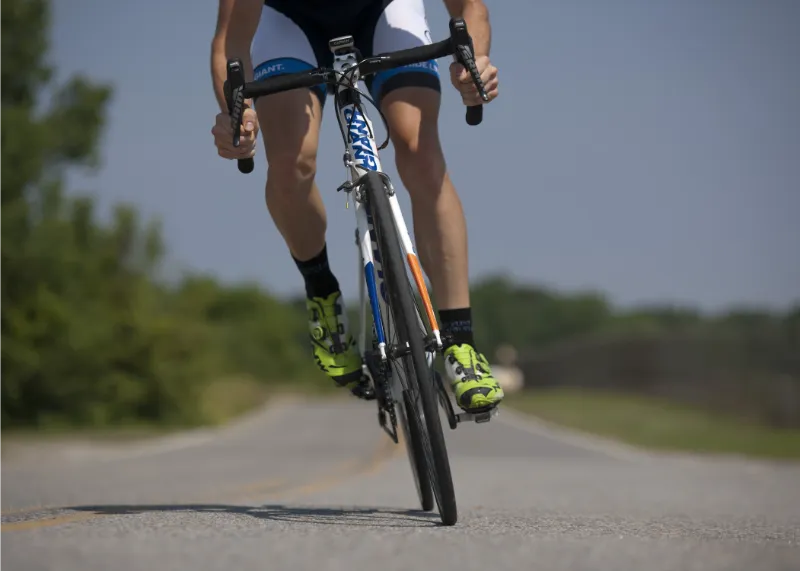According to the BMJ, the health benefits of riding a bike outweigh the accident risks and the average daily cyclist enjoys a degree of fitness equivalent to someone 10 years younger. Since lockdown many more people have been giving cycling a try and over the summer with less cars on the road the amount of people cycling was very noticeable.
The beauty of cycling is that it can be done on a variety of levels to suit your needs. Whether you are cycling to work, as a family, or you go out on your high spec road bike there is something for everyone to enjoy. The majority of us could find a way of incorporating cycling into our regular routine.
So, what do you need to know to get started?
Ensuring your saddle is at the correct height is key
Sit on your bike with your heel in the middle of your pedal and downwards in its furthest position with the crank in line with the seat upright. Your hips should be completely in line and your leg straight but not over extended.
You can also check that the back of the knee cap is in line with the ball of the foot and the ball of the foot over the middle of the pedal.
Experiment a little with the position by riding your bike and then adjusting your saddle by very small amounts until it feels right. The pedalling motion should feel smooth. You should not be rocking in the saddle or feeling any strain at the back of the knee.
Distribution of body weight
Ideally your body weight should be distributed with about 60 percent at the back of the bike and 40 per cent at the front. You need to make sure that you are not reaching too far forward on the bike and that your handle bars are not too low down. Obviously, there are lots of different styles of bike some with flat handlebars and some with drop handlebars. You need to find the best one for your needs and probably going to a specialist bike shop would be helpful to try out which is right for you.
How do you avoid getting an injury when beginning cycling?
First of all, it’s important to get yourself set up to avoid having any falls on your bike. Having a fall can cause a muscle injury which then leads to over compensation of other muscles of the body. Incorrect positioning on the bike can lead to overstretching or tightness of the piriformis muscle, situated in your lower back/buttock.
A tight piriformis can cause sciatic type pain which can cause pain in the hips, down the leg or into the foot and although quite common in cyclist, it is very painful. Therefore, it is important to stretch your back out following your ride.
Overall strength
Another important factor to consider is making sure that the other supporting muscles in your body are strong for cycling. For example, the muscles of your abdominal core. Weakness in this area can cause over compensation of other muscles in the body. Some strength training in this area may be helpful.
Look after your knees
Your knees may also suffer if, as already mentioned, your position on the bike is incorrect. The knee joint is also dependant on other muscles in the leg such as the hamstring and IT band, which all support the knee. It can help to use stretching exercises or a foam roller to ease out muscles in this area and keep the knee functioning correctly.
Handle bar position can affect the wrists and neck when cycling. An incorrect position here can cause tingling of the fingers and can be due to compression of the ulnar and median nerves. Padded gloves may be helpful.
Use the correct footwear
Feet can suffer when cycling due to tight and constricting shoes or socks causing a condition called ‘hot foot’. Feet swell while cycling especially in the summer months therefore you may need different shoes and socks for different seasons.
Some cyclists also suffer with a condition called plantar fasciitis which is a tightening of the plantar fascia which runs under the foot. This commonly causes a heel pain when walking. Again, stretching of the calf muscle and using a foam roller under the foot may help. However, plantar factiitis often requires further intervention from a physio.
Here at Physio Answers, we can provide a full assessment of all the muscles needed for cycling and also advise on exercises to avoid injury. For more information, contact us today.
If you are starting out and are unsure whether its right for you or you are suffering with an injury or soreness we can help.

